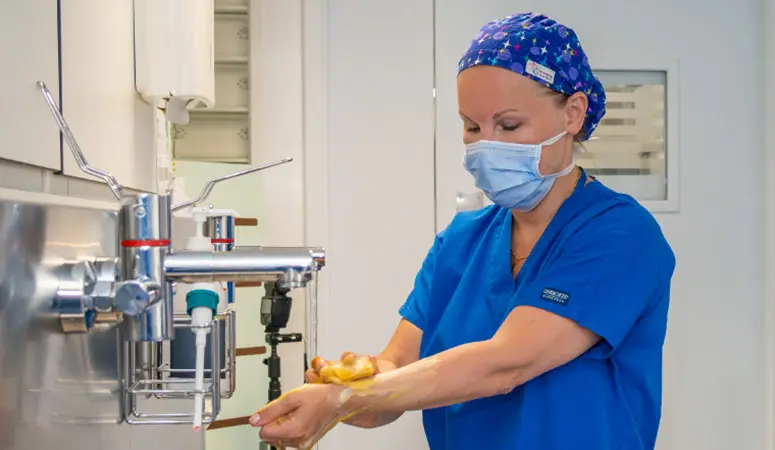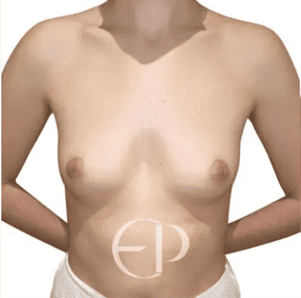
What are the different types of tuberous breasts
Published by
Elena Prousskaia
Breast shape, size, symmetry and nipple size are common insecurities in women. Many seek cosmetic surgery to correct these, such as breast augmentation, breast lift or breast reduction. Still, it is essential to identify a tuberous breast deformity if you want aesthetic surgery.
Tubular or tuberous breasts result from developmental complications in the womb, but this only becomes apparent during puberty. The deformity is typically characterised by a conic or tubular shape, breast hypoplasia (underdevelopment) horizontally and vertically and protrusion of the nipple and areola. A unique surgical approach is required to correct tubular breasts, so you must go to a specialist surgeon if you want tubular breast surgery.
This article discusses the features of tubular breasts and the defined types and grades of breast deformities. Then we discuss the possible correction options for tuberous breast deformities.
Click on one of the links to jump to that section
-
What are the features of tuberous breasts?
Here, we look at the main characteristics of tuberous breast deformities.
-
What are the different grades of tuberous breasts?
There are five types of tubular breasts and three grades of asymmetry
-
Types of tuberous breast correction
Breast implants, breast reconstruction and other corrective surgery, can be used for all types
- Frequently Asked Questions
What are the features of tuberous breasts?
Tuberous breasts are diagnosed symptomatically. However, every case can display a unique set of characteristics. The typical features of tuberous breasts are as follows:
-
Small breast base
-
The tubular, conic or cylindrical shape
-
Large, protruding nipples/areolas
-
Wide-set breasts
-
Deficiency in tissue volume
-
Droopy breasts or downward-pointing breasts
-
Elevated inframammary fold
-
Underdevelopment in the lateral and lower portions of the breasts
-
Breast asymmetry
-
Peripheral breast constriction
Some symptoms do not always suggest a tubular breast deformity; this can be confirmed at your consultation.
What are the different grades of tuberous breasts?
The types of tuberous breasts are also categorised by the presence of specific symptoms. The condition is graded according to the kind of deformity and the severity of asymmetry. There are four or five types of tuberous breasts and three grades of asymmetry.
Type I
This is the mildest tuberous deformity and is characterised by the following:
-
Underdevelopment in the lower and inner portions of the breast
-
Breasts usually have normal volume
-
Wide-set breasts
-
Potentially outward-pointing breasts /nipples

Type II
This type of tuberous breast deformity is more severe and is characterised by the following:
-
Underdevelopment in the outer, inner and lower portions of the breast
-
Conic or oval breast shape
-
Slight drooping of the breasts
-
Slight deficiency in breast volume
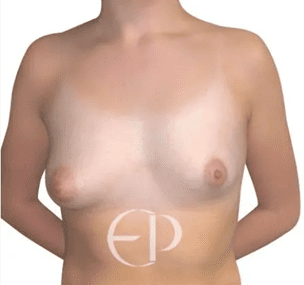
Type III
Again more severe than type II, the type III breast deformity is characterised by the following:
-
Underdevelopment in the outer, inner and lower portions of the breast
-
Deficiency of skin and tissue under the areola
-
Nipples/areolas may sit very low in the breast
-
Droopy breasts
-
Oval, conic or cylindrical shape
-
Large, bulging (herniated) areolas & nipples
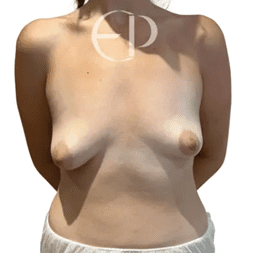
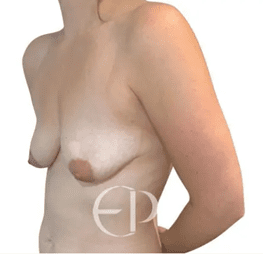
Type IV
This type is not characterised by underdevelopment or skin deficiency but by the following characteristics:
-
Small breast base
-
Constricted breast development
-
Large, bulging (herniated) areolas & nipples
-
Cylindrical/oval shape
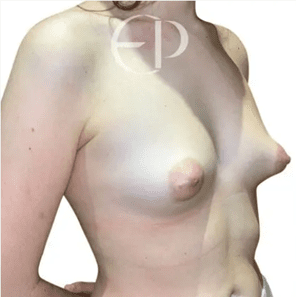
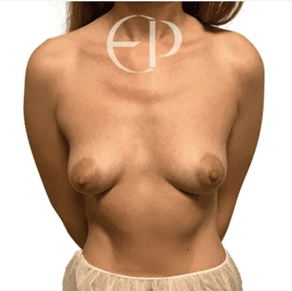
Type 0
Another type of tuberous breasts was later proposed; this type does not display many characteristics of the other types. Type 0 is characterised by herniation of the Nipple-Areolar-Complex (NAC) with a normal breast base. You may have type 0 if you have the following:
-
Large, bulging (herniated) areolas & nipples
-
Normal breast volume
-
Normal breast shape
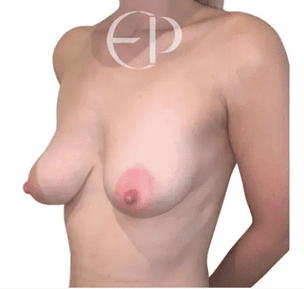
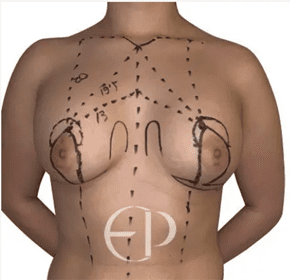
Grades of breast asymmetry
Another way that tubular breasts are assessed is by the degree of breast asymmetry. There are three grades, mild, moderate and severe which relate to the difference in breast volume.
-
Mild asymmetry – less than 200g difference between right and left breast
-
Moderate asymmetry – between 200g and 400g difference
-
Severe asymmetry – over 400g difference between right and left breast
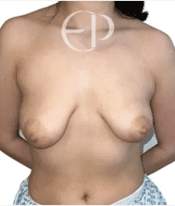
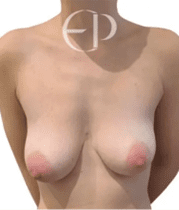
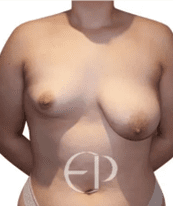
Types of tuberous breast correction
Your surgeon will assess your condition and suggest the best cosmetic surgery approach for fixing tuberous breasts. These deformities usually require the following surgery:
-
Disturbance of the constricting fibrous ring releases the breast parenchyma to form a new shape. This is required for types II & III.
-
Breast tissue remodelling – breast tissue must be reconstructed in most cases to create a natural breast shape. Breast tissue is usually folded to fill the lower quadrant of the breast (types I, II, III & IV). Tissue around the nipple and areola frequently needs reducing in types III, IV & 0.
-
Tissue expanders – small or severely deformed breasts (types III & IV) may require a tissue expander to encourage the skin and connective tissue to stretch to fit the breast implants.
-
Breast implants – if the patient desires more breast volume, the plastic surgeon can perform breast augmentation using implants. These will give fullness to all quadrants of the breast. This is particularly useful for women with breast asymmetry or type II, III or IV deformities.
-
Areola reduction – a doughnut-shaped incision can be made around the areola to reduce its size. This is appropriate for type III, IV & 0 deformities
.
-
Male breast reduction is also possible for gynaecomastia or male tubular breasts.
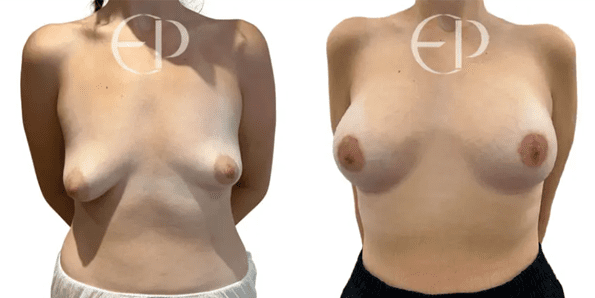
Frequently Asked Questions
-
Some risks of breast surgery (outlined above) include infection, loss of nipple sensation, pedicled flap failure (tissue remodelling) or capsular contracture (implant). An inexperienced surgeon could leave you with ‘double bubble’ deformities if the tubular breast correction was incorrectly done.
Book a consultation with a specialist plastic surgeon in tubular breast correction.
-
If the tuberous breast correction surgery is done correctly, the plastic surgery results are permanent. The fibrous ring can sometimes return if the surgeon has not adequately disturbed the breast constriction. This highlights the importance of visiting a highly experienced and skilled surgeon to avoid tuberous deformities returning.
-
There are no unique breast implants for tuberous breasts. Standard silicone implants can add natural-looking breast volume if the correction is done correctly. We use only the highest quality implants because we “consider the quality of the materials of paramount importance for your health and well-being”. The Mentor Silicone Gel-Filled Breast is one of the most robust and highest-quality on the market.
-
Anyone who fits the criteria of the above five types of tuberous breasts will be eligible for a correction. If, during your consultation, we conclude that you do not have tuberous breasts but still want cosmetic surgery, we may recommend another procedure.
-
If you display multiple symptoms outlined above, you may have tuberous breasts. They are not harmful, so you do not require plastic surgery. If you would like aesthetic surgery to correct your tuberous breasts, it is essential that you go to a specialist surgeon, or you could be left with unsatisfactory results.
Sources
Share this article
Back to Advice Centre


